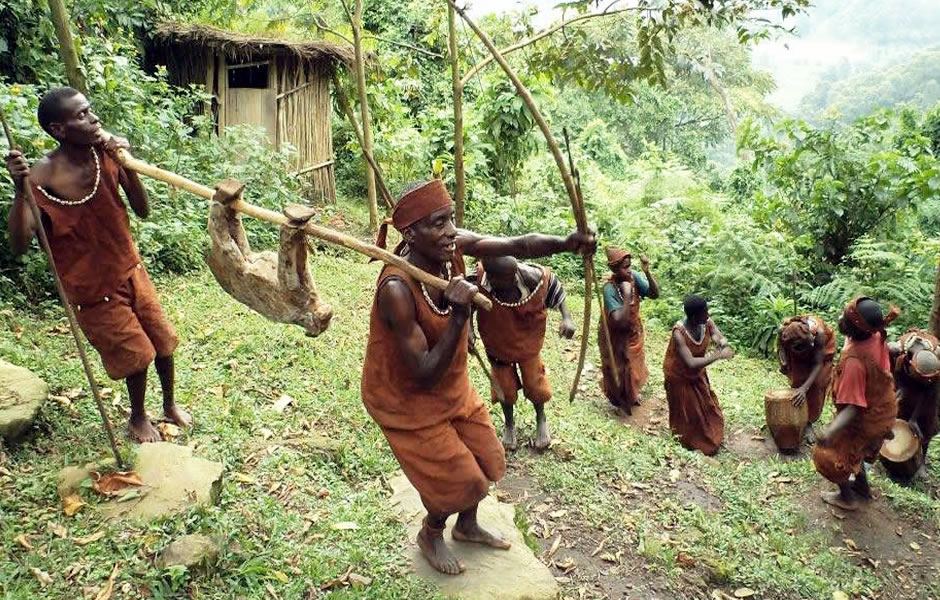Cultural Experiences In Uganda
Exploring tribes across distinctive clusters in Uganda
Uganda, a land of abundant cultural riches, boasts over 54 diverse tribes that contribute to its vibrant tapestry. From the majestic eastern plains to the central region’s bustling heart, the mountainous western landscapes to the enchanting southwestern valleys, Uganda’s tribal clusters offer a captivating glimpse into the nation’s cultural mosaic. Let us delve deeper into these clusters and discover some prominent tribes that exemplify the cultural richness of each region.

Eastern Region
The eastern region of Uganda is a cultural melting pot, where tribes like the Bagisu, Iteso, and Karamojong thrive. The Bagisu people, residing on the slopes of Mount Elgon, are renowned for their fascinating initiation ritual known as Imbalu. This celebration of manhood involves circumcision, accompanied by traditional dances, music, and feasting.
The Iteso people, with their artistic inclinations, display their creativity through pottery, intricate beadwork, and colorful fabric patterns. As for the Karamojong tribe, their nomadic pastoralist lifestyle and deep connection to cattle form the foundation of their traditions, including vibrant dances, cattle ceremonies, and distinctive dress adorned with beads and elaborate hairstyles.

Central Region: The Kingdom of the Baganda
The central region of Uganda is dominated by the Baganda, the largest tribe in the country. The Baganda people boast a rich royal heritage and have preserved their traditions through elaborate ceremonies and customs. The vibrant music, dance forms like the Kiganda, and storytelling sessions showcase their artistic prowess.
Traditional ceremonies like the Kwanjula (marriage ceremony) and the Buganda kingdom’s coronation rituals are significant cultural events that demonstrate the community’s deep-rooted traditions. The Baganda attire includes colorful gomesis (floor-length dresses) for women and kanzus (long white robes) for men, adding to the visual splendor of their culture.

Western Region
The western region of Uganda is a treasure trove of cultural diversity, housing tribes such as the Banyankole, Bakiga, and Batooro. The Banyankole people, predominantly cattle herders, have a deep connection to their livestock, which plays a central role in their cultural practices and ceremonies.
The Bakiga tribe is renowned for their pottery skills and the production of beautiful handwoven baskets, showcasing their artistic talents. The Batooro people, with their rich history and monarchy, have distinct cultural dances, such as the Runyege, and music that captivate the senses during traditional celebrations.

Southwestern Region
The southwestern region of Uganda is characterized by its stunning landscapes and indigenous tribes, including the Batwa, Bakonjo, and Banyarwanda. The Batwa people, often referred to as the “Pygmies,” are the indigenous forest-dwelling tribe of Uganda. They possess a deep knowledge of the forest and have a unique cultural identity shaped by their close connection to nature.
The Bakonjo tribe, residing near the Rwenzori Mountains, have their cultural practices influenced by the mountainous terrain, reflected in their traditional attire and dances. The Banyarwanda, who migrated from Rwanda, have brought their own traditions and customs, enriching the region’s cultural fabric.

Northern Region
The northern region of Uganda is home to tribes such as the Acholi, Langi, and Alur. The Acholi people are known for their vibrant cultural practices, including energetic dances like the Bwola and traditional music performances. The Langi tribe, primarily agriculturalists, engage in farming activities and have unique cultural practices associated with agricultural cycles. The Alur tribe has a rich heritage of art, craftwork, and traditional ceremonies, often marked by the captivating Alur dance.
Diversity beyond the Clusters
Beyond these regional clusters, Uganda is home to numerous other tribes, each contributing to the nation’s cultural diversity. Tribes like the Teso, Karimojong, Lugbara, and many more add to the rich tapestry of Ugandan culture with their distinct languages, customs, and practices.
Uganda’s cultural diversity is a testament to the country’s rich heritage and the resilience of its people. From the varied tribes residing in different clusters across the country, Uganda showcases a tapestry of traditions, beliefs, attire, and culinary delights.
By exploring the cultural clusters of the eastern, central, western, southwestern, and northern regions, one can truly appreciate the depth and beauty of Uganda’s cultural mosaic. Immerse yourself in the warmth and hospitality of the Ugandan people, engage in their customs and traditions, and embark on a journey of cultural discovery that will leave an indelible impression on your heart.
